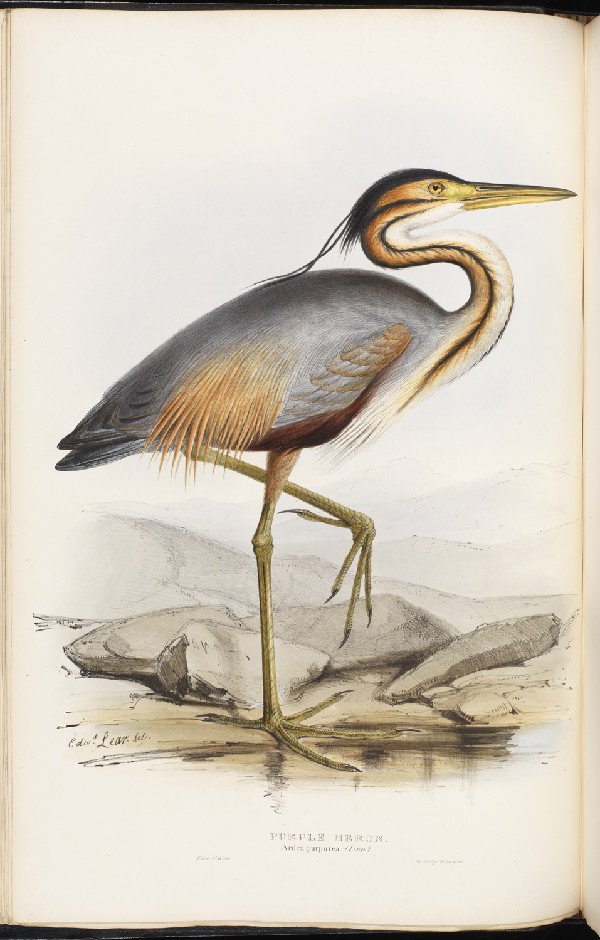Science as Art: Edward Lear's Zoological Illustrations
Culmenated Toucan

Culmenated Toucan (Raphastos culmenatus) from John Gould FRS, A Monograph of the Ramphastidæ, or Family of Toucans (London, 1834)
Purple Heron

Purple Heron (Ardea purpurea) from John Gould FRS, The Birds of Europe (London, 1832–7), vol. 4
Quebec Marmot

Quebec Marmot (Arctomys empetra) from Gleanings from the Menagerie and Aviary at Knowsley Hall, ed. John Edward Gray FRS (Knowsley, 1846)
Eagle Owl

Eagle Owl (Bubo maximus) from John Gould FRS, The Birds of Europe (London, 1832–7), vol. 1
Drawing for Scientists

The 19th century artist and author Edward Lear was best known for his nonsense poetry, including the children’s classic, The Owl and The Pussycat. However, Lear got his start drawing detailed illustrations of animals for scientists. In honor of the bicentennial of Lear’s birth in 1812, The Royal Society in London is hosting an exhibition of his work, drawn mainly from its library. The exhibition’s centrepiece is a folio containing Lear’s zoological illustrations, which records show Charles Darwin checked out of the library. Above, one of Lear’s toucan illustrations.
Malayan Giant Squirrel

Malayan Giant Squirrel (Sciurus javensis) from Gleanings from the Menagerie and Aviary at Knowsley Hall, ed. John Edward Gray FRS (Knowsley, 1846)
Ancient Molluscs

Ammonites, from William Buckland FRS, Geology and Mineralogy Considered with Reference to Natural Theology (London, 1836), plate 40
Get the world’s most fascinating discoveries delivered straight to your inbox.
Green-Winged Teal Duck

Green-winged Teal duck (Anas carolinensis) from The Zoology of Captain Beechey’s Voyage (London, 1839)
Spiny Turtle

Spiny Turtle (formerly Emys spinosa) from Thomas Bell FRS, A Monograph of the Testudinata (London, 1832–6)
Eastern Grey Horned Owl

Eastern Great Horned Owl (Bubo ascalaphus) from John Gould FRS, The Birds of Europe (London, 1832–7), vol. 1

